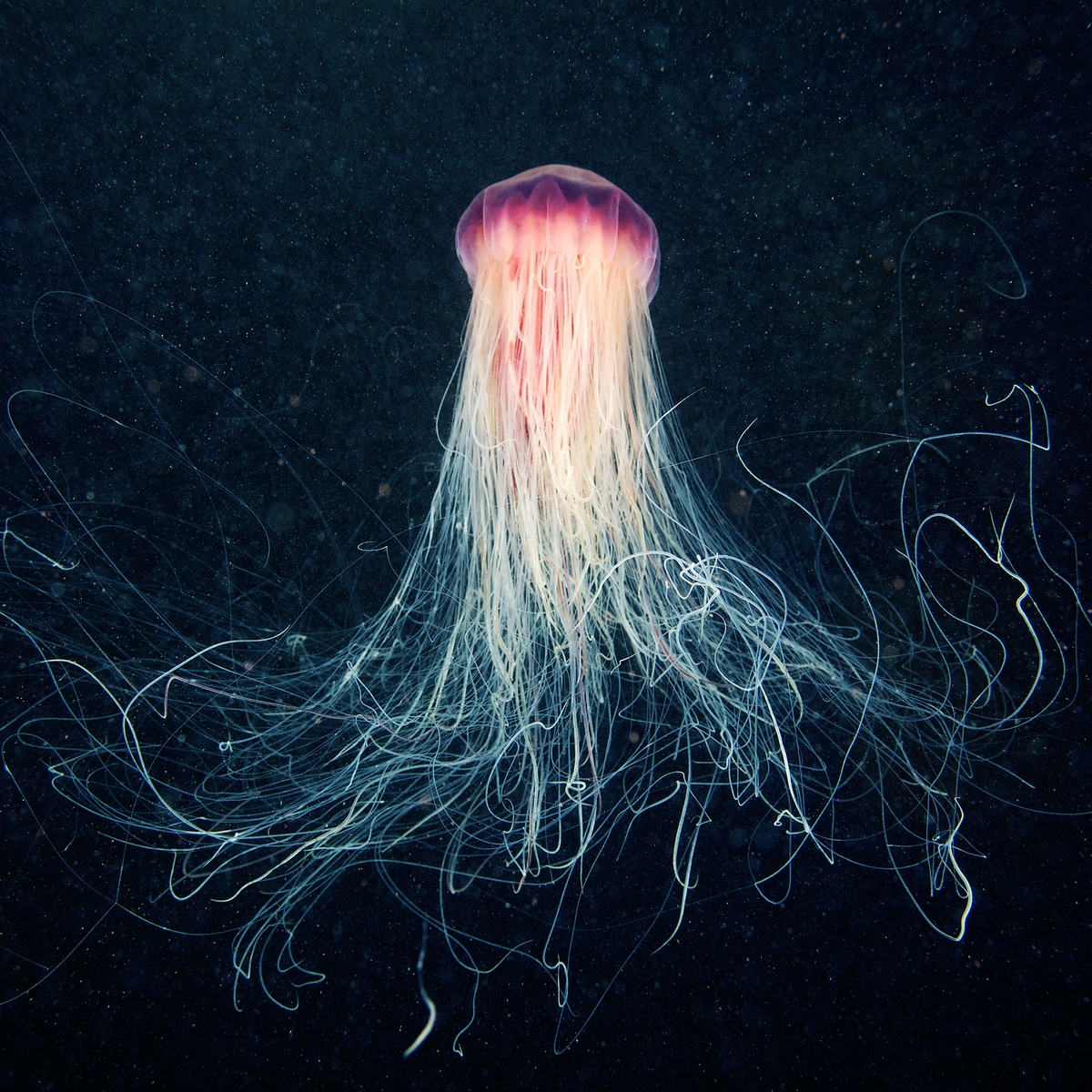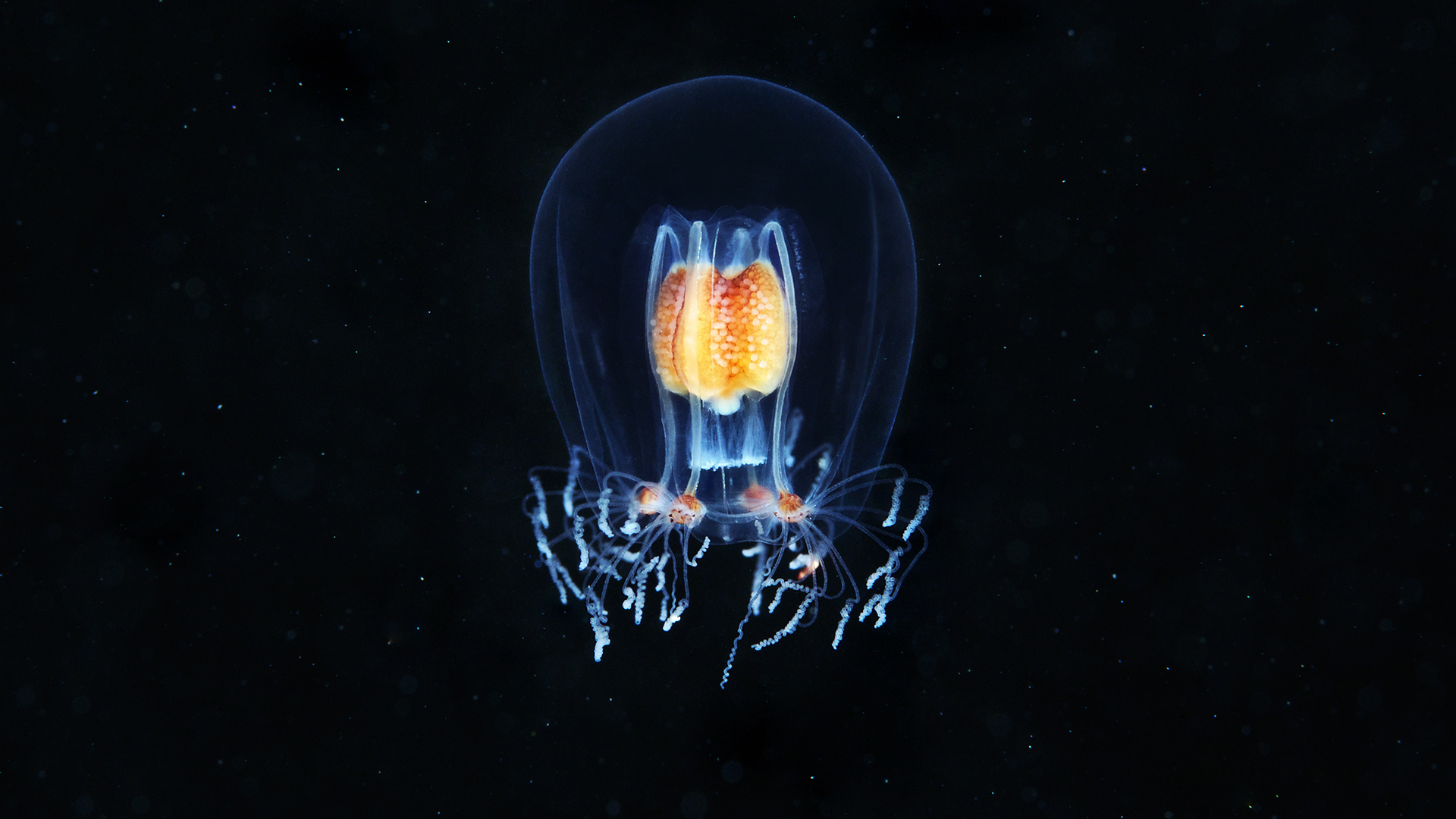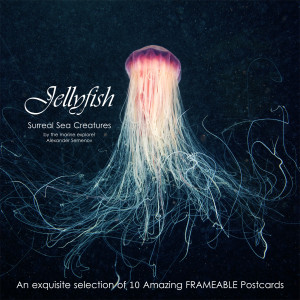
JELLYFISH – Surreal Sea Creatures
At 300 feet beneath the surface, the ocean is dark. There are no landmarks around, you are suspended. Look hard enough and they appear: translucent creatures filled with colour. Some are as tiny as the nail on your finger, others are the size of a building. These are gelata – unstudied, mysterious and omnipresent. They are the ocean’s unseen backbone. Gelata are soft-bodied organisms carried by the currents. Their alien beauty mesmerises us, their lives fascinate us. They float through waves: fragile, iridescent, beautiful. Gelata are also a key component within oceanic ecosystems. They are unique in how little we know about them.
Gelata are one of the least understood animal groups inhabiting the world.
The information that we have about them comes from disparate studies of limited locations around the globe. Study samples are gathered mainly with tow nets which destroy the creatures’ delicate bodies. The animals’ deconstructed gelatinous pieces let us identify the species on a genetic level, but give no information on how they live or how they interact amongst themselves and with the world surrounding them. We often can’t even tell what they look like. Although highly-focused studies of various gelata are regularly carried out, a comprehensive study of these organisms has never been conducted.
What we know about gelata, however, shows how important studying them is. It has been noted that as fish populations decrease in certain areas (due to overfishing or environmental factors), gelata swarm the waters. They then prevent fish repopulation by feeding on organic substances that serve as fish food and even on young fish themselves.
Do you know that some species of gelata, like the deadly siphonophores, could reach gigantic dimensions, of up to 100 feet (30m)? This almost equals the height of the Statue of Liberty, from feet to the crown!
The amazing photographs you’ve just seen, are captured by the Russian marine biologist and photographer Alexander Semenov, who leads the expedition AQUATILIS. This expedition is an epic three-year underwater journey through the unknown, set to explore the world’s most extraordinary creatures.


